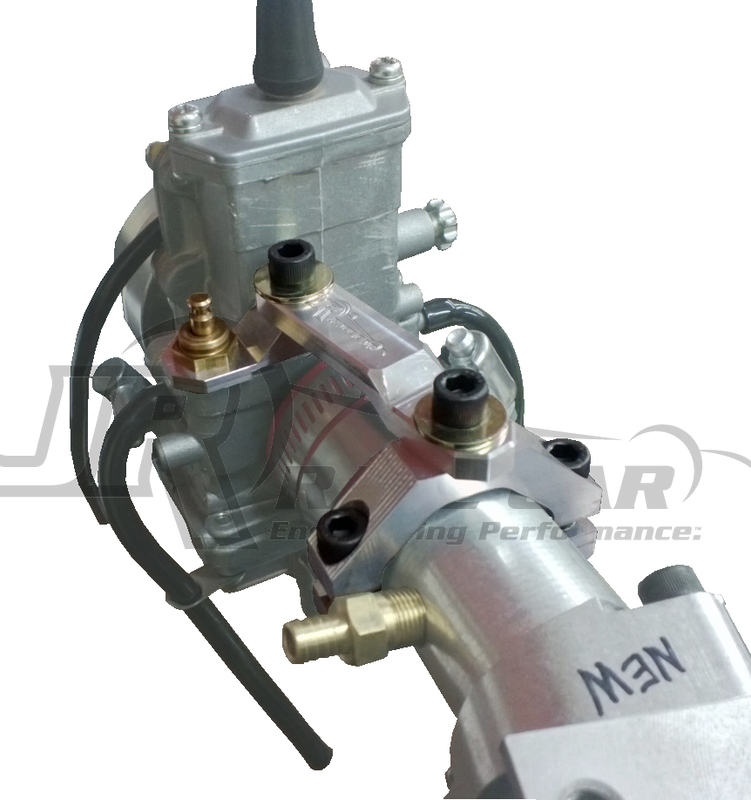Carburator Tune-up

This time of year we get a lot of questions about tuning up carburetors. Most engine building and fellow racers will ask about tuning indicators to help change the tune-up. EGT (exhaust gas temperature) and CHT (cylinder head temperature) are two of the most common tune up indicates. There are other indicates that racers and crew chiefs describe such as a bog or stumble, misfire or pop, surging or unstable RPM.
The Basics
The carburetor is where air and fuel are mixed and sent down the intake manifold to the engine. Air velocity through the throat or venturi of the carburetor draws fuel from the bowl and up into the air stream. The fuel pump only flows fuel into the bowl, it is the air velocity through the throat that draws fuel into the air stream.
The tune up of the carburetor will change with changes to atmospheric pressure. Traveling to other tracks and going up or down in elevation my require a change to your carburetor. Going up in elevation with less atmospheric pressure will need less fuel (smaller jet), while going down in elevation will need more fuel (larger jet).
Jet Selection (Mikuni Carburetors)
There are a variety of jets available, generally speaking the larger the jet number the bigger the passage through the jet. There are two fuel jets that control how much fuel passes from the bowl into the venturi, a pilot jet and main jet. The pilot jet is used at when the slide is low is closed, or nearly closed. The pilot jet controls many of the staging indicators such as temperatures and RPM stability.
The main jet controls the fuel at wide open throttle, in drag racing this is everything past about 3 ft. The main jet controls surging or miss firing on the big end of the track. The balance tween the pilot and main jets controls the off idle response of the carburetor. If the two jets are out of balance then there may be a bog or stumble when the throttle goes from idle to wide open.
The air jet, or air adjustment on the carburetors is is a passage that lets air into the fuel stream about half way between the bowl and venturi. This air helps brake the fuel up into smaller droplets. The more air (bigger jet, or adjustment screw out) that passes through the less fuel is drawn from the bowl.
The Tune-Up
Tuning a carburetor is a little of an art form. Each person may do it a little differently or have different options on different indicators. Two of the same carburetors may have a different jetting and they both run well. The real test of the tune-up is did it go down track smooth and consistent? If your car is running with no pops, bogs, misfires, surging, or hunting at staging, and is consistent in time; Don't fix it! CHT and EGT go out the window, they don't matter if the car runs good and consistent.
If you need tuning advice please call or e-mail us with your question, there are far too may specifics to cover in this article. We also have a chart in our Tech Department page for tuning of basic indicators.

